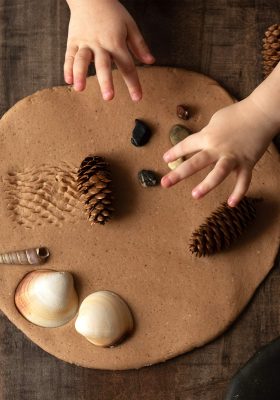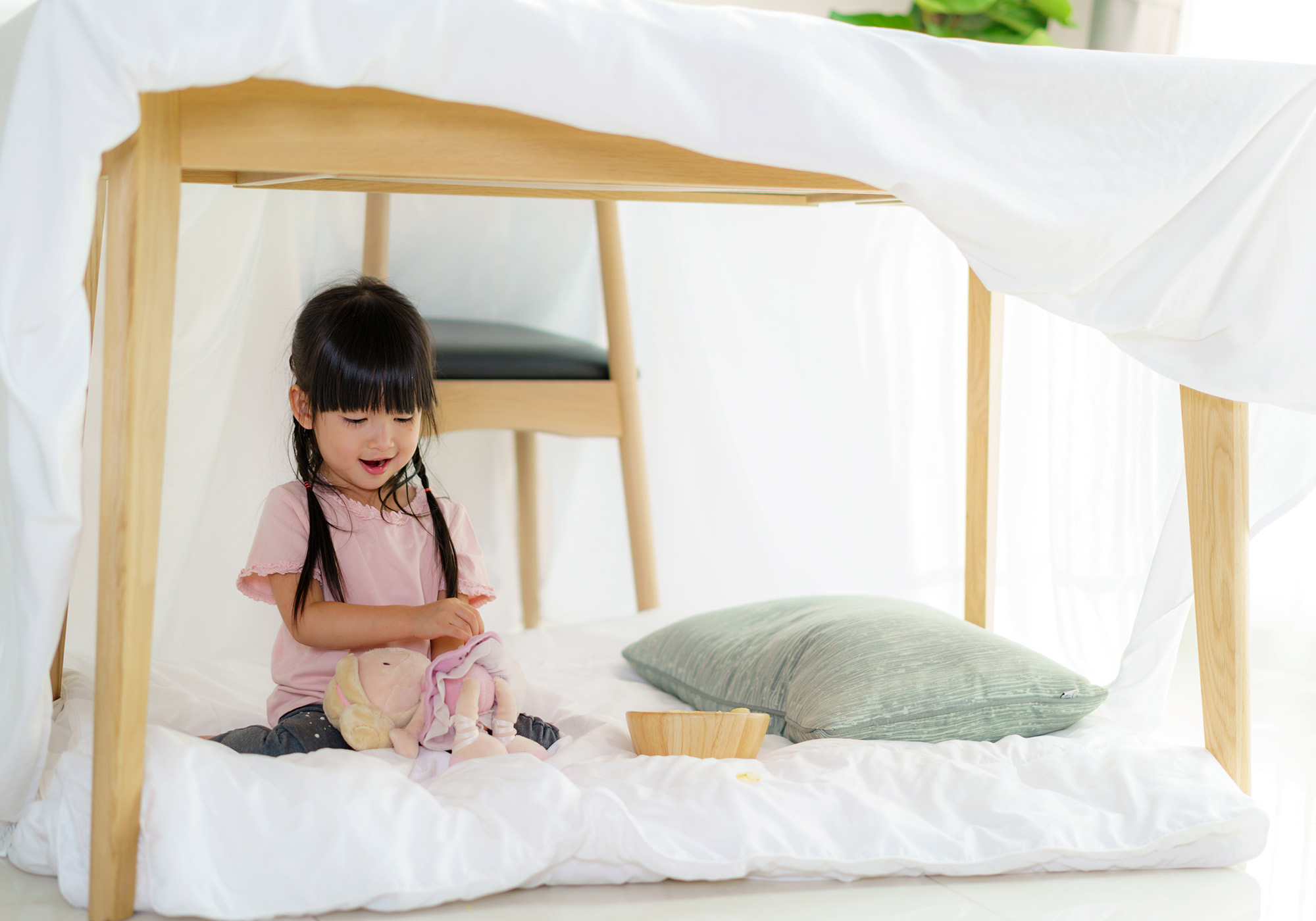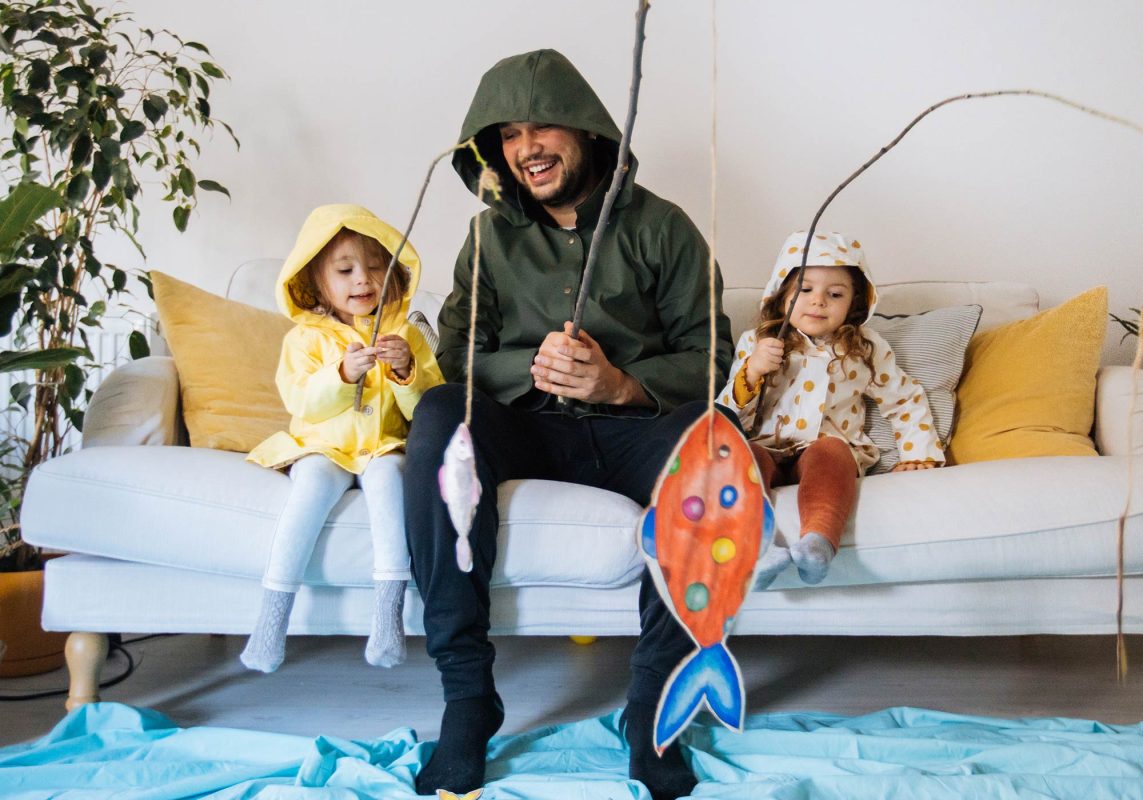A WALDORF TEACHER’S SUGGESTIONS FOR ENRICHING INDOOR PLAY
Play is the heart of childhood, the foundation of our humanity. Human beings are given a very long period of infancy and childhood. During this extended infancy, the brain is “wired together” for efficient learning and functioning. This will serve us the rest of our life. If we study closely the brain development that takes place in these years, we will stand in awe, thunderstruck at the marvel of each child. The Importance of Creative Play has never been more dire, after being limited with outings and technology for kids on the rise.
Sharifa Oppenheimer, the former founding teacher of the Charlottesville Waldorf School and director of Batesville’s Rose Garden School shares this excerpt from her book Heaven on Earth: A Handbook for Parents of Young Children on why and what kind of creative play is so important.
Importance of Movement & Play for Kids

We say that children “learn by doing.” This is a common way of saying that the learning process is a miraculous orchestration and integration of the entire body, moving a million tiny interconnected particles toward the “gestalt” that is meaning. Children think through movement and play. In movement and play, the brain goes through all the complex processes of growth and learning. The main avenue through which the child perceives the world is the realm of the senses. Through the natural sensory input of play, the child actively makes the world his own.
Neurophysiologist Carla Hannaford, author of Smart Moves, says, “The richer our sensory environment, and the greater our freedom to explore it, the more intricate will be the patterns for learning, thought and creativity. . . Our sensory experiences, both external and internal, shape our way of imaging and, therefore, our thinking.” It is the life force through which the young child plays that will grow eventually into cognitive thought.
If we watch a young child at play, we can see that through her constant sensory/physical interaction with the environment, she gains experience and understanding of the situation, of herself and of the relationship between the two. She comes to know herself, the world and what flows between. A baby sees a bright, round object and reaches for it. At some point she manages to push the ball, and now she sees the colors dance. Eventually, she learns that when she moves in such a way she has the pleasure of the dancing colors. She learns through the open exploration of the senses, in other words through play, that she has impact not only on the world but also on her inner experience. The movement of reaching for the ball or any purposeful movement sets in motion a cascade of neural communication that creates a foundation for lifelong learning.
Through this sensory-rich play, the child gains a certain mastery over her body, the outer world and her inner world of emotional experience. It is critical that through active play the different areas of the brain that control thought and emotion begin to communicate. “The frontal lobe,” Hannaford writes, “is able to synthesize thought with emotion through . . . the limbic system to give us compassion, reverence for life, unconditional love and all-important play.”
It is critical that through active play the different areas of the brain that control thought and emotion being to communicate.
When a child’s younger sibling is born, she can incorporate this experience through play with her doll. She can feed, bathe and nurture her doll. She may also resolve aggressive feelings by “sending brother back” and stuffing the doll into a corner. Day by day, she vacillates, experimenting with how feelings work and what she wants to do with them. Given time, given your own quiet observation of the process and your capacity to “hold” your child in love, you will see the experience become integrated. Your child will develop the new and necessary qualities. As neural pathways are forged in the brain, essential qualities grow in the heart.
Children are always in motion, constantly “doing.” Movement activates the brain’s neural wiring, making the whole body the instrument of learning. It is our task, as parents and educators, to allow children this necessary motion in an environment that encourages purposeful movement. Especially in these times of ever-increasing overstimulation of the senses through the media, through technology, and through our hectic pace of life, we must create play environments that allow the child to discover the world at his own pace through purposeful movement and creative imagination. We must allow him the freedom to move his body and his world in a way that suits these creative impulses.
Creating An Indoor Playscape for Kids
It is tempting to create our child’s playspace upstairs, or in the room around the corner. Our young child wants more than anything else, though, to be in contact with us, his parents. We can give him this much-needed contact while still maintaining a little personal space of our own by arranging for his playspace to be right in the middle of the common area of our home… right where we are! Just being in our presence, or within sight, is often enough. If he says, “Play with me,” your reply could be, “I will be the old grandmother washing dishes (or whatever you are doing), and you can be my little grandchild who is picking flowers in the woods (or the captain of the spaceship who has landed on the moon).” He may need a little jog of the imagination like, “Your spaceship looks like it needs some repair. Where is the spaceship repair shop, and who is the mechanic?” He may get involved in a game and give you the running commentary, only needing an occasional “mm-hmm” from you. Wherever the most traffic is, wherever life is lived the most, that is exactly where he wants to be.
Our young child wants more than anything else, though, to be in contact with us, his parents.
What Kind of Toys are Best for Creative Play?
The way young children think is through their play. It is the way they make the world their own, it is how they make meaning in their life. We adults make life meaningful through our thoughtful consideration of that which life gives us. A child, on the other hand, plays through, again and again, each new circumstance and each new developmental step.
In thinking of the young child’s free creative play materials, a fitting motto to keep in mind is, “Anything can be anything.” What does this mean? Children need play materials that are open-ended enough to meet new needs each day, to fill the demands of their imagination. A toy needs to be “unformed” enough to be reasonably used as many things, in many circumstances. For instance, a red fire truck with a remote control will always be destined to be exactly that. Whereas a simple, open-bed wooden truck can be a fire truck, a farm vehicle, a bus, a lumber wagon or even a circus truck! An open basket can be a bed, a suitcase, a grocery bag, a hat or, when turned upside down, a mountain, a prison, a cave or a hiding place . . . anything can be anything!

Importance of Nature Play for Kids
Nature is always our best guide. After we pull dried corn off the cobs and set it out in the squirrel feeder, we can put the empty cobs in a basket on the shelf. “Corncobs? My child’s new toys are corncobs?” The answer is an enthusiastic “Yes!” First of all, corncobs can be “grated” for months—two cobs rubbed against each other, over a wooden bowl—to make corn dust. The corn dust can be saved in a jar and sprinkled on icy spots outside in winter, similar to sawdust. Your child will spend hours grating contentedly, bringing bowls of dust for you to admire and save in preparation for winter. Corncobs are miraculous toys, being useful as fishing poles for the dolls, rollers in the beauty parlor, saws for halving a small stump you might bring inside for the winter, logs to be carried on the lumber truck, corn for dinner, toothbrushes for bedtime. . . . And how about a basket of well-chosen sticks? They can be sanded (many more hours of happy industry) to a silken smoothness, and become fencing for a herd of small wooden horses, or necessary bolts in the construction of a child-built ship, the bridge for the castle guard or the plank the pirates must walk. Seashells? How about cell phones, beds for tiny fairy dolls, a walkway to the doll’s house, spoons, dishes or a boat’s anchor. . . again, anything can be anything!
We will also want to choose ready-made toys to go in the baskets. Again, think open-ended, imagination-rich. How about a basket of knitted farm animals? After your child builds a farmyard with blocks, she can place the animals in their family units. Then a long game of domestic barnyard life can ensue. She may need a basket of wooden wild animals to populate the zoo she builds with blocks the next day. A few good-sized wooden trucks help with any project, transporting wild animals included. An essential toy for the four-and-a-half-plus set is a basket of braided yarn or bootlaces. These will be used to pull wooden boats and trucks as they go about their deliveries, or as leashes for stuffed animals, and to tie together many incredible constructions involving the dining room chairs, toys, other furnishings and who knows what. The yarn or laces need to be thick and sturdy. They will be brought to you full of the many fabulous knots children this age are capable of, and you will want to be able to unknot them with some amount of good cheer.
Household Items Perfect for Building with Kids
What the young child is doing, in a very physical way, is rehearsing building his own body: building the physical structure that will house him in his life’s journey. We can offer our children play materials that reflect this “house building” paradigm. Luckily, with a little imagination, our living rooms, dining rooms and linen closets contain nearly everything needed for this venture. If we give our child not only the freedom to use the living space and the furniture in a creative way but also a little imaginative help, we will be giving ourselves the greatest gift a parent can have: a happy, industrious, creatively engaged child. We will give up, for a few hours of play each day, the lovely furniture arrangement we adults appreciate, but what we are given back in exchange is 10 times the price of the happy chaos. Truly, it is chaos only to our grown-up eyes. For the child, these creations are the “stuff” of life, full of meaning and import, and reflections of themselves.
You can help your child begin this house-building process with a leading statement, something like, “When I was a little boy, we used to build the best forts under the dining table.” Or, “Your aunt and I made houses for our stuffed animals and ourselves, too, with a sheet thrown over the dining room chairs. We played there for hours.” You can go through the linen closet and choose a sheet or two as roof-making material, then place them in a basket on the toy shelf. Show your child how to pull the dining chairs out, to make more space, and then clip the sheet to the table with some spring-type clothespins. Buy a few small throw rugs to be brought inside as bedding, or use what have you. The dining chairs can be moved and lined up to be the train for a trip to Grandma’s, and a pillowcase is a perfect suitcase to cart all of the supplies. Houses will develop from both your child’s and your own imagination. You might see a good window molding to clip a roof sheet onto and then clip the other side onto the backs of two chairs—a house! Or, your child might need a kitchen cupboard to be emptied, and its contents relocated, in order to make a hidden den for wolf cubs.
Another wonderful prop for house building is a basket of colored scarves. You can order a set of rainbow-colored silk scarves from one of the natural toy catalogs, or go to the local department store and look for simple, natural-fiber scarves in solid colors. These become everything from curtains at the table-house window to seat belts for a car-ride, capes and tunics, scarves and skirts, and many things in between. At cleanup time, scarf folding is a fun task for you and your child to do together.
All the imaginative games you either played as a child, or never got to play, will emerge as you help arrange a play environment that fosters creative imagination in your child. The Importance of Creative Play is essential; it’s the heart of childhood and the foundation of humanity!
Need ideas for more creative play ideas at home? Check out Easy At-Home Math and Science Games. For creative play out of the house, see this list of Best Interactive Museums for Preschoolers in Virginia.
is the former founding teacher of the Charlottesville Waldorf School, director of Batesville’s Rose Garden School and the author of Heaven on Earth: A Handbook for Parents of Young Children, from which this article is excerpted.
YOU MIGHT LIKE



